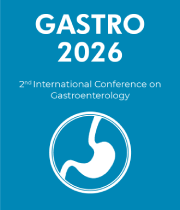Title : Characterizing the molecular and physiological changes associated with colorectal cancer in wistar rats
Abstract:
The high mortality rate associated with colorectal cancer (CRC) underscores the need for improved diagnostic and therapeutic approaches. To this end, animal models are invaluable tools for enhancing our understanding of the disease, as they can be used to gain insights into disease mechanisms and to test potential treatments. This study aimed to characterize a model of colorectal cancer (CRC) chemically-induced in Wistar rats. Twenty-nine male Wistar rats were randomly assigned to two control groups (CTRL1 and 2) and two induced groups (CRC1 and 2)
who were administered 1,2-Dimethylhydrazine (DMH). Animals were monitored weekly for signs of stress and physiological parameters were recorded. At the end of the study, animals were sacrificed, and tissue and blood samples were collected for further analysis. Stool samples were collected for gut microbiota analysis. Unexpectedly, five animals in the induced groups died during the protocol with hemorrhagic enteritis. Abdominal temperature was significantly higher in the CRC2 group compared to the CTRL2 group. The CRC group had lower microhematocrit. Serum concentrations of ghrelin and myostatin were higher in the control groups. The control groups showed no proliferative lesions in the colon, whereas pre-neoplastic lesions were observed in the CRC groups, including one adenoma. Inflammatory infiltrate was observed in the intestine, lung, and liver in all animals; however, inflammation was significantly higher in the induced groups. Comet assay and oxidative stress data showed DMH-induced toxicity in the liver and colon of the induced animals, respectively. The analysis of the gut microbiota revealed that induced rats had elevated levels of Firmicutes, Clostridia, Clostridiales, Peptostreptococcaceae, Blautia, Romboutsia, and Clostridium sensu stricto, compared to the controls. However, the control animals had higher levels of Prevotellaceae, Prevotella, Akkermansia, and Lactobacillus.Our findings reveal the potential of this model in elucidating the chemopreventive mechanisms of CRC at its earliest stages.
Acknowledgements
This work is supported by National Funds from FCT - Portuguese Foundation for Science and Technology, under the project UIDB/04033/2020. R.S.-R. thanks FCT/MCTES (Fundação para a Ciência e Tecnologia and Ministério da Ciência, Tecnologia e Ensino Superior) and ESF (European Social Fund) through NORTE 2020 (Programa Operacional Região Norte) for her PhD grant ref.
2022.14518.BD.




